Glatt Powder Synthesis – Pioneering Process for Groundbreaking Particle Synthesis
Future materials such as high-energy and safe battery components, more economical membranes, orthopedic ceramics, functional additives or high-performance pigments must provide more than the current properties of existing material components. A common issue within each of these applications is the high levels of powder performance that are required. Therefore, completely new products or novel innovations require powder materials that must first be developed and then manufactured in the necessary quantities. With APPtec®, plant manufacturer Glatt has succeeded in overcoming these challenges and established a mature continuous process technology to produce future materials at both laboratory scale for research purposes and at industrial levels. Time-consuming and risky scale-up procedures are eliminated because of the size-independent conditions — fluid mechanic and thermodynamic — that exist from lab- to commercial-scale production.
- Author: Dr. Jörg Wagner, Leiter Advanced Powder Processing, Glatt Ingenieurtechnik
- originaly published in the trade magazin ‘cfi Ceramic Forum International’, issue 4-5/2019, Göller Verlag
Traditional synthesis processes
An issue, though, is the fact that the particle size of high-performance powder materials can only be produced under extremely accurate and reproducible process conditions. Common processes with which nanoscale or sub-micron powders in various compositions can be produced are chemical, mechanical and thermophysical synthesis. Wet chemical methods (hydroxide precipitation, sol-gel-syntheses, hydrolysis, hydrothermal processes) lead to so-called precursor powders. Only post-treatment calcination delivers the desired crystal formation, whereby the particle structure and size must be controlled by carefully monitoring the reaction.
By contrast, large quantities of pure powder can be produced with this old and simple method. However, the time-consuming process of grinding the particles is only really suitable as a way to homogenize the reaction components. Hugh amounts of energy are required to grind a nanoscale ceramic powder. In addition, the grinding method can lead to undesired phase transformations, including amorphization, abrasion and contamination. Thermophysical methods use evaporation-based techniques to condense fine particles from solid, liquid or gaseous starting compounds. They are widely used in the synthesis of nanocrystalline powders and known processes include, for example, laser evaporation, flame pyrolysis, plasma and microwave-assisted evaporation. These techniques require complex technical prerequisites and usually generate low throughput quantities.
Whether combustion or thermal decomposition is used, if the heat treatment is too intense or not homogenous, as can occur during flame pyrolysis, plasma reactor technology or rotary kilns, hard aggregates or hotspots form.
Hard aggregation is generally caused by the fact that the very high local temperatures induce a partial melting phase. Hence, colliding particles remain directly attached to this phase and, during cooling, a hard chemical bond is formed. When the powder is transferred to the application matrix, the particles not only have to be distributed uniformly, but also often have to be dispersed. If the powders are not or only lightly agglomerated (physical surface bonds), this is generally easier to achieve. But in the case of hard aggregations (chemical bonds), this is virtually impossible. Last but not least, another challenge in the production of future materials is to establish a more economical and scalable process for reproducible quality.
Rethinking spray calcination
APPtec® is a thermal powder synthesis technology that is particularly suitable for the production of fine or nanostructured materials with homogenous chemical properties. The abbreviation APPtec® stands for Advanced Pulse Powder technology, the process belongs to the thermos-physical class. This pioneering spray calcination development makes it possible to produce completely new powder types in a hot gas reactor. Compared with other methods, this is a more homogenous thermal treatment, providing a wider range of material applications, fewer hard aggregates and easier scale-up.
Ceramic materials are particularly suitable candidates because of their unique performance characteristics. From batteries, LEDs and coating systems to catalysts, corrosion protection components or cathode materials for fuel cells, this wide range of applications requires increasingly complex material systems. APPtec® enables the development and manufacture of highly complex powder systems within which particle distribution is homogenous.
One of the advantages of the process is that the particle size can be specifically adjusted by controlling the spraying parameters and the process conditions used (Figure 1). In addition, APPtec® can accommodate a wide range of raw materials, which means that low-cost ingredients can be processed into higher-value products with specific or customized properties. Furthermore, doped components and systems can be used, making spray calcination ideal for the production of oxide, nitride and sulfide ceramic and other product groups, such as metal oxides. Using the innovative spray calcination method, a particle size and morphology can be fine-tuned to provide specific properties.
The required stoichiometry can also be configured for highly complex systems. This ensures that any doping elements are optimally distributed. In addition, both the mineralogical and chemical composition can be precisely defined. For example, mixed oxides such as spinel, perovskite or titanate can be produced; and, owing to the adjustable phase composition, particles can also be produced from high-temperature phases such as corundum or mixed oxides such as mullite.
At the pulse of the reactor
APPtec® builds on established spray calcination technology, wherein calcination refers to altering the chemical composition of a substance by thermally expelling any volatile components. The heart of the technology is a specially designed elongated process chamber in the synthesis reactor
ProAPP® 500 (Figure 2). A strictly controlled hot gas flow pulsates in this chamber, providing unique fluid dynamics. In fact, owing to the high degree of turbulence, pulsating gas flows do not demonstrate the temperature and speed gradients that would typically be found in continuous gas flows.
As a result, all particles undergo the same thermal treatment (Figure 3). With constant flow and increasing pulsation intensity, the layer of air that forms in the gas flow and surrounds the particles is almost completely eliminated. As a result, the heat transfer rate from gas to particle can be up to five times faster, which means that the particles heat up very quickly and cool down just as rapidly at the end of the reaction (Figure 4). This extremely accelerated particle formation and phase transformation provides the desired reaction states and the subsequent formation of unique structures.
When raw materials are added to the process, two effects are triggered. Using silicate-based powder (conventional SiO2) as an example, any substances with which the surface of the raw material has already reacted are removed (the OH groups in the case of SiO2). The raw material thus becomes “purer.” Secondly, pore size and specific surface area of the particles can be manipulated, contributing to the functionalization of the particle. This process is very fast; the solvent or water is evaporated and the particles are formed very rapidly.
In addition, process steps such as drying, calcining, particle formation or coating can be combined in a single step. If needed, functional core shell particles with application-specific layer thickness, porosity and activity characteristics can be produced (Figure 5). Because of the absence of local hot spots in the reactor, no sintering takes place. As a result, the individual particles are easily separated and dispersed.
With APPtec® technology, those thermodynamic conditions that can be easily adjusted by targeted process control. Process conditions such as temperature, residence time, frequency and amplitude can be set as accurately as the pulsating gas flow speed. Additionally, the gas atmosphere — oxidizing or oxygen-free — can be chosen according to the application.
Test batches and product samples in hours
This unique thermal treatment opens up many possibilities for the customization of particle properties in an application-specific manner and to produce novel, not currently available additive systems. Test batches for material and reaction analyses or product samples can be generated under industrial conditions and recipes or product ideas — from raw material to a usable amount of powder — can be brought to fruition in a short time, so that pilot projects or the marketability of a product can be assessed quickly.
To cite a joint research project example, the Fraunhofer Institute for Ceramic Technologies and Systems (IKTS) has been working on thin, supported membrane layers for oxygen generators. To put it simply, the new membrane tubes are intended to lead to a considerable increase in O2 permeation while, at the same time, the required number of membranes produced decreases significantly. Ceramic components such as membranes, storage materials and catalysts are to be optimized with regard to their process-relevant properties. This involves geometry, layer thickness, porosity and cell thickness. The aim is to develop smaller and more cost-effective O2 generators with asymmetrical MIEC membranes, which can be used both in medical technology and industrial applications. Given the importance of the particle morphology, the powder raw materials for the membrane are being produced with APPtec®. And, having successfully completed the preliminary tests, IKTS has now ordered a ProAPP® lab-scale reactor to capitalize on the manufacturing opportunities.
Process without disposal risk
Considering the procurement and disposal costs that the manufacturing industry usually has to contend with, processing in hot gas reactors is a truly economical alternative. Once the right raw material or blend has been identified and the process established, there is no waste. Production can be started immediately after the successful evaluation of practical tests.
Shaping technology is one of Glatt’s core competences. As one of the world’s market leaders in fluid bed technology, Glatt has more than 60 years of experience in pioneering solutions for the development, refinement and production of solids. The plant manufacturer accompanies its customers from the initial idea through process development to the construction of complete production plants. At Glatt’s technology center in Weimar, Germany, materials for research projects are developed and produced in hot gas reactors as well as novel powders for its customers (Figure 6).
Summary
The demand for high-performance powder materials is increasing worldwide, combined with extremely high requirements for narrow particle size distribution and application-specific properties such as chemical composition, phase structure, morphology and surface chemistry. With APPtec®, Glatt introduces a continuous powder synthesis method that makes it easy to adjust these properties and enables cost-effective production of the desired quantities. Spray calcination in a pulsating hot gas reactor enables a wide range of powder synthesis applications under unique and homogenous conditions with numerous advantages for the adjustment of particle properties.
Additionally Glatt will show a new compact concept for continuous powder agglomeration, as well as “PHOS4green,” an innovative way to produce quality fertilizers directly from phosphorus-containing ashes.
ProAPP® reactors in a nutshell
Process temperature 200 – 900 °C (higher temperatures on request)
Pulsation frequency 10 – 300 Hz
Pulsation amplitude 0 – 50 mbar
Residence time 100 ms – 10 s
Gas atmosphere oxidizing or O2-free (other atmospheres on request)
Suitable materials solutions, suspensions or solids
Further information on this topic and related topics can also be found in the following publications:
Published article: ‘Ceramic Raw Materials from the Pulsating Hot Gas Stream’ PDF, English
Published article: ‘New Battery Material by Powder Synthesis’ PDF, English
Published article: ‚Forward-looking plant planning – How pre-engineering can bring ideas to market faster‘ PDF, English
Published article: ‘From Hot Gas Stream to Matt Finish by Glatt Powder Synthesis’ PDF, English
June 2021: Fraunhofer IKTS operates world’s first flameless high-temperature powder synthesis plant

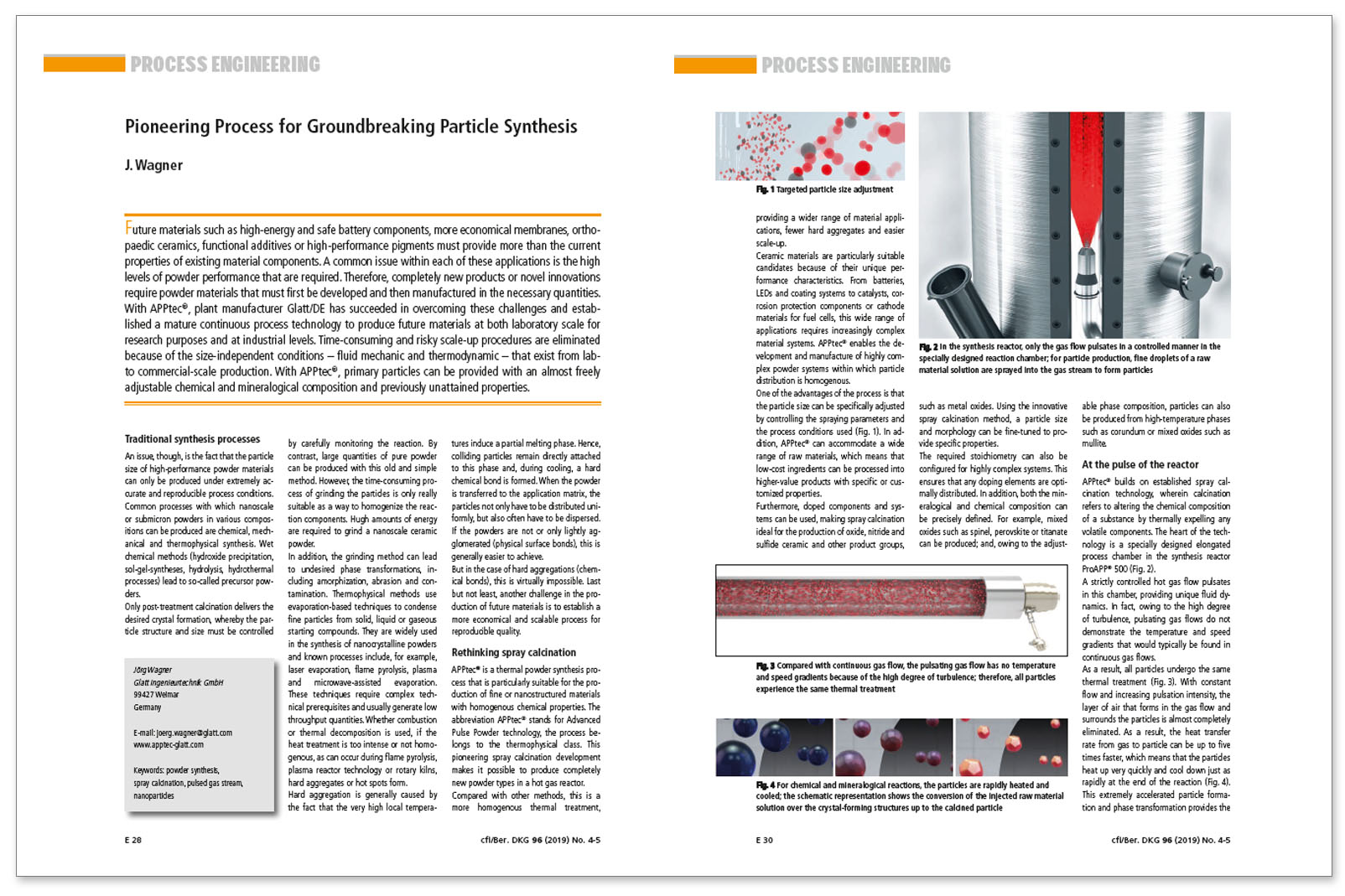
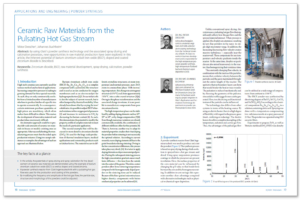
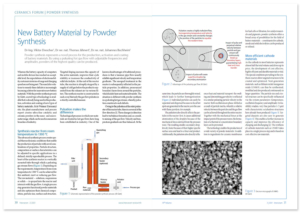
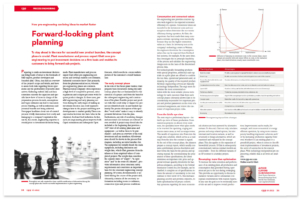
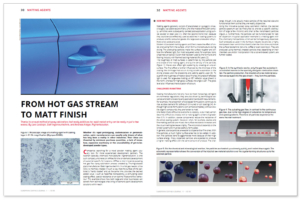
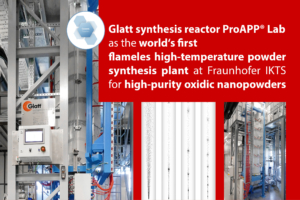
 Copyright: EC PRESSE
Copyright: EC PRESSE Glatt
Glatt